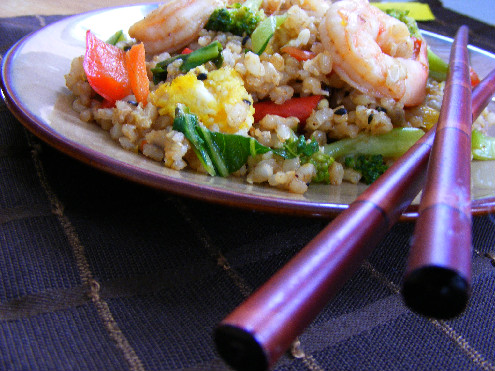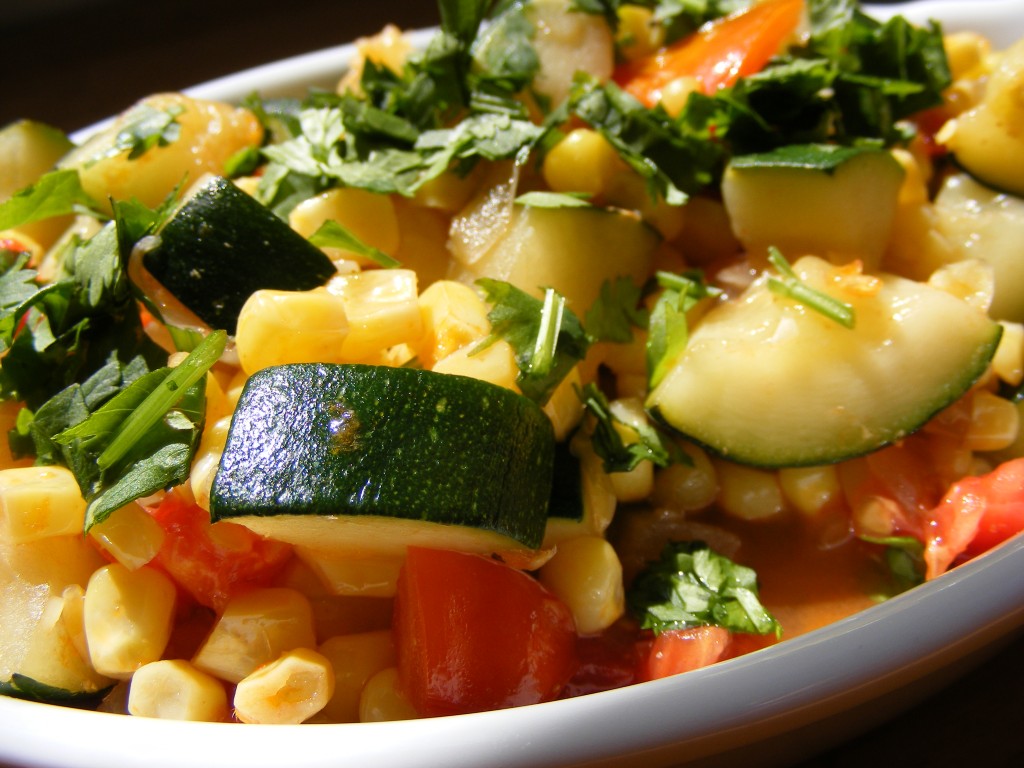Rice: Five Spice Brown Fried Rice
Thursday, March 11th, 2010
It’s ironic but my favorite five spice mix has six ingredients: Chinese cinnamon, Chinese #1 ginger, star anise, ground fennel, cloves and black pepper.
A quick search online indicates that it’s not all that uncommon and there are mixes aptly named “seven spice.” Supposedly, it’s not so much the number of spices used that’s of import but encompassing all five flavors – sweet, sour, bitter, pungent and salty.
Regardless, the spice mix is what turns this vegetable-laden brown rice dish into a Chinese-inspired main course that’s quick and easy. In China, stir-frys were eaten out of practicality – meat was scarce but rice and vegetables were more plentiful. Stir-frying also conserved fuel by cooking food quickly.
Even though I write this food blog – and put more time into cooking than some – I take advantage of some practical approaches to cooking. For instance, I make one big batch of rice for the week. We’re not huge pasta or bread eaters in our house, so our starchy carb is rice. It’s usually eaten with a lot of soups and beans.
Over the last few months though, I’ve been making fried rice out of leftover brown rice. It’s a go to recipe when I want something substantial without a whole lot of effort. Each time I’ve made it’s been a little of this and that – how I generally cook. I provided measurements just as a guide but hope you make it your own. So, use whatever vegetables you have in the crisper, change out/omit the meat source and even use white rice.
And, one more thing – this is a healthy meal and a good way to eat more vegetables and fiber – despite the word “fried.”
Tidbits on Rice:
- Rice feeds more than half of the world’s population.
- Asia, Latin America and Africa comprise the world’s major rice growing regions. Notably, most rice is consumed within 10 miles of where it is produced.







